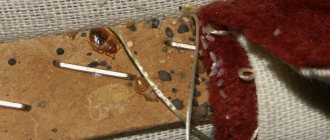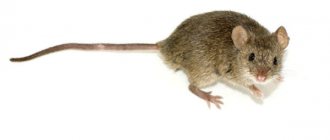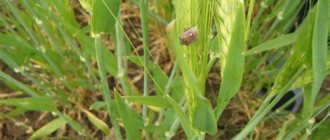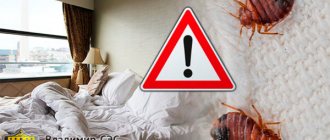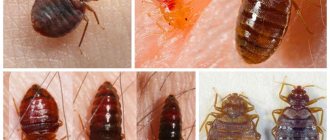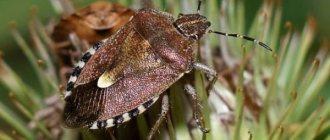Shield bugs - who are these beetles? What class do they belong to?
This is the name of insects whose body is pentagonal, reminiscent of a knight's shield. This is a common feature that unites representatives of the true shieldfish family. Thanks to it, it becomes possible to recognize insects among many garden and garden pests.
Shield bugs live in their natural environment and do not attack humans, since their food source is plants.
But these are not beetles, although they are somewhat similar.
| Squad | Hemiptera |
| Suborder | Bedbugs |
| Infrasquad | Pentatomomorpha |
| Superfamily | Shield insects |
| Family | Real shield protectors |
Shield on the back
Do garden bugs stink when crushed?
All varieties of bugs of the stink bug family have special glands that secrete a secretion with a specific odor, the intensity of which differs in different types of insects.
With the help of this bodily function, they scare away enemies and signal about approaching danger, attract partners for mating, find fellow tribesmen and navigate in space.
The unpleasant aroma is especially intensified when the bedbug is physically damaged, when the odorous secretion is squeezed out of the glands in which it is formed and stored.
Brief characteristics of the genera of the family True shield insects (lat. Pentatomidae)
Insects live in different areas, but prefer a moderate, warm microclimate.
They are attracted to fields, orchards, and vegetable gardens where food sources can be found.
The family of true shield insects is distinguished by species diversity. Among the varieties there are representatives of different colors, the body length also differs.
Insects live in places with temperate or warm climates
What do shieldbills look like? What colors are representatives of the species. Description. Close-up photo
There are a large number of species of such insects. General signs:
- 3 pairs of limbs;
- 1 pair of antennae (there are 5 segments on each);
- body length varies from 1 to 3.5 cm;
- there are wings (in most species);
- There are organs of vision, but not all representatives of families have them perform their function.
Individuals of each group have their own distinctive characteristics, which allows them to be classified as one species or another. Color is one of these parameters. Among the shield bugs there are individuals of different colors:
- yellow;
- brown;
- red-brown;
- green;
- grey-brown.
There are also colorful insects. Their outer covers are unevenly colored.
The bright color allows pests to warn natural enemies of danger if they decide to attack.
Green shield
Marbled bug
A prominent representative of stink bugs
Life cycle, reproduction
The duration of existence of many shield insects is 1-2 years. Insects have to spend the winter in harsh conditions. Considering that bedbugs cannot tolerate exposure to critically low temperatures, they tend to find shelter - mainly under leaf litter, in compost raw materials. The life cycle of such individuals consists of 3 stages:
- egg;
- young individual: pests of the first instars are called larvae, and the latter - nymphs;
- sexually mature insects - imago.
Such pests skip the pupation stage. Shield bugs begin to reproduce in the spring, soon after they leave their wintering grounds. They feed actively at first. This allows them to gain enough strength and energy for further life activities. The female lays eggs only after eating.
In this case, offspring are found under the leaves, on the fruits of trees and shrubs.
The duration of development of embryos inside eggs is 1-2 weeks. Then the larvae of stink bugs appear. They go through 5 stages of growing up. On each of them, insects renew the gradually forming chitinous shell.
Life cycle of the berry stink bug
What do they eat, what do they eat?
Most individuals are herbivores. There are much fewer representatives of predatory, polyphagous species. The first group includes those that receive plant sap, and the second group includes individuals that feed not only on plantings, but also on invertebrates, crustaceans, and other insects.
All types of bedbugs have the same type of mouthparts – piercing-sucking.
It easily penetrates the plant and the victim. To speed up the digestion process, bedbugs inject saliva containing an enzyme that helps change tissue structure. As a result, they liquefy. This allows you to quickly suck out the nutritious juice through the thin proboscis.
Predator kills prey
What harm does
The damage caused by the green bug includes spoilage of berries. Insects do not eat them, but make them unfit for food due to the unpleasant odor. The “fragrant” secretions of the odorous mammary glands, although harmless to people, completely deprive them of appetite.
During the season, bugs lay eggs twice, placing them on the inside of the leaves. It takes about 13-15 days for their development, after which the first generation larvae emerge. They immediately begin to feed, puncturing the leaves with a sharp proboscis. By sucking the juice, they release poison into the plant, which causes the foliage to wilt. As a result, the affected parts dry out and fall off.
All other generations feed no less actively. In their development, bedbugs go through 5 molts and often die before reaching maturity. The larva of any stage is covered with a hard shell of chitin. It does not grow with it, so the larva must get out of it during the transition from one instar to another. This is not at all easy; often the nymph dies, unable to free herself. No fewer larvae become food for birds and predatory insects.
Therefore, bedbugs are not considered dangerous garden pests, because serious damage can only be caused by large populations of insects that completely cover bushes and trees. They are formed extremely rarely.
Most forest shield insects can be easily collected from bushes by hand.
But the grains in the fields suffer fully from the activity of bugs, as a result of which the plant not only stops growing and bearing fruit, but also often dies. The damage caused by bugs in fields is significant enough to warrant pest control.
Types of shield insects
For ease of classification, they are divided into groups, each of which has its own characteristics. Kinds:
- shield bugs are real;
- arboreal stink bugs;
- shield turtles;
- gray;
- earthen, etc.
Some representatives of species diversity:
- Woody. This group includes about 200 varieties. General characteristics of insects: a sharper transition from the front to the rear end of the body, the color is predominantly green/brown. Color may vary depending on environmental conditions. The body length is most often 10-15 mm, but there are representatives of species up to 35 mm.
- Marble. True shield bugs belong to the family. This bug is characterized by a brown color, but you can notice an unusual pattern, thanks to which the insects resemble marble, which contributed to the appearance of this name. The body length reaches 17 mm; punctures can be seen on the sides. Light rings are also visible on the antennae. Insects of this species enter people's homes for the winter, but do not attack them.
- Striped. The full name is the line bug, striped graphozoma, but unofficially it is called the Italian bug. This is due to its coloring - the body has rusty/red or brown stripes, which is due to the similar coloring of the uniform of the Vatican Guards. This pest is distinguished by a more curved body shape - the ridge on the pronotum is somewhat larger. Body length – 11 mm.
- Redlegs. Insects belong to the family of true shield insects. Their limbs are red, or rather bronze with a sheen, which is what gives the name of the pests. They are both herbivores and predators, destroying plants and insects. The body color is darker - brown, but also with shine. Body length – up to 16 mm.
- Bicuspid. This stink bug differs from the others in that it uses teeth for feeding, through which it clings to its prey. This allows the pests to complete the job - they inject poison into the insect’s body until its death occurs. Body color is dark brown, length – up to 15 mm.
- Sharp-shouldered. The bug has visible spines on its sides. They are mistaken for the shoulders, which is why the insects got their name. Body length is up to 14 mm, color is lighter (brownish).
- Black mustache. Representatives of this species differ from their counterparts in that their antennae are of a different color. Body color varies from dirty yellow to brown. Moreover, the body color is uneven. Punctures are visible on the sides. The antennae always remain black. The bug is widespread in Eurasia, found literally everywhere and even along roads.
Types of stink bugs
Berry shield bug is a species of bugs from the family True shield bugs.
The pest is characterized by a bright color - brown-red, with a yellowish undertone, the chitinous covers are shiny. There are punctures on the sides of the body, the limbs and antennae are of the same color (black and white). These individuals are considered small, body length is 10-12 mm. Among stink bugs, larger pests are often found - up to 17 mm. For comparison, some water bugs reach 15 cm, which is tens of times more than the indicated values.
In other respects, berry shield bugs do not differ from representatives of other species. They have 3 pairs of limbs, sensitive antennae, and wings. When folded, only the front ones can be seen - leathery. The hind, transparent wings are almost invisible. Such insects live on berry bushes, can destroy tree fruits, and sometimes feed on herbaceous plants.
When they insert the proboscis into the fruit, it can no longer be eaten, which is due to the strong odor that remains after the insects.
This is the result of the release of a special secretion containing cimicic acid. This is how pests protect themselves from the threat.
Berry shield
Are stink bugs dangerous if they enter a person’s home or apartment?
Insects of this group cause people only indirect harm - not directly, but by destroying crops and crops.
Shield bugs feed on plant sap and, if heavily infested, can contribute to the death of plants.
If we consider the possibility of an attack on a person, then it must be immediately excluded. The mouthparts of bedbugs are too weak for the insects to pierce the skin. In addition, they have completely different defense mechanisms than predators: bright colors, intense odor that insects emit when danger arises.
If such pests enter a person’s apartment, it happens by accident. Shield bugs themselves cannot find a way out; they need help - open the windows. Then the bedbugs will be able to leave the apartment/house. There is no need to specifically destroy such individuals. Firstly, they will not be able to feed and reproduce in such conditions, and secondly, the insects secrete a secretion that will be difficult to remove; the strong smell will remain in the apartment for a long time.
How to get rid of stink bugs in your apartment and garden
Several methods are being considered, among which the use of insecticides is especially highlighted. Home and biological control methods are also noted. But first of all, you need to maintain order on the site:
- regularly destroy plant debris, and it is better to burn them; if individuals have managed to hide in the grass, they can come back, even when organic waste is taken out of the site;
- They dig up the garden twice a year: in spring and autumn, which will destroy the offspring of bedbugs that remain on the surface;
- repellent herbs are planted: wormwood, black cohosh.
Black cohosh is the enemy of pests
Insecticides
Most of the products used today contain neonicotinoids - these are substances of a special class, they affect the nervous system of pests.
The drugs affect insects through the cuticle and digestive tract.
The substances penetrate the structure of plant tissues and then enter the body of bedbugs during ingestion. Examples of such tools:
- Karate Zeon;
- Karbofos;
- Aktara;
- Actellik.
Alexey, 42 years old, Bryansk
I alternate the preparations so that the insects die quickly upon contact with the insecticide. I heard that they develop resistance if you use the same product often. But so far I have been lucky, the results of treating the area are excellent, after 1-2 days no new signs of bedbug infestation appear.
Karate Zeon
Biological control methods
This group includes different options:
- exposure to bacteria and fungal spores on pests, this method allows you to reduce the number of insects without the risk of poisoning people; such drugs also have no effect on plants;
- Pests are attacked by natural enemies, these can be birds, some parasitic bugs.
Stink bug affected by spores of the fungus Purpureocillium cf. lilacinum
Folk methods - how to fight safely
There are tools that have already gained popularity and are used everywhere. These include:
- onion peel: take 250 g of raw material, 1 bucket of water, you need to leave the product for 5 days, then spray it, but this is done no more than once every 5 days, first filter the solution;
- mustard: 100 g of powder, 1 bucket of water, the product should be used as rarely as possible, because it tends to cause burns on plants.
Galina, 48 years old, Vladimir
My grandmother taught me how to remove insects from the plot with onion peels. This is an old method, but it helps get rid of insects without the need for insecticides.
Onion peels are an effective and safe pest repellent
Traditional methods for garden bugs
- Infusion of onion peels. It is necessary to prepare a solution of 10 liters of water and 250 g of husk. After it has been infused for 5 days, it is filtered. Plants are sprayed once every 4 days.
- Laundry soap solution. Prepare a solution of 10 liters of water and 300 g of soap. Treatment is carried out every week.
- Mustard solution. Dissolve 100 g of mustard powder in 10 liters of water. Repeat spraying every 3 days.
Reviews from people
Varvara, 32 years old, Moscow
I poisoned bedbugs in my area near the house; I didn’t have the strength to watch the insects destroy my flowers. First I used Karate Zeon insecticide, then I kept it clean with a solution of onion peels.
Anastasia, 33 years old, Saratov
I had never encountered bedbugs on the site before; I didn’t know what kind of infection this was. When I was harvesting the first harvest of vegetables, I saw that some of them were damaged: in spots, spots. Then I found insect eggs on the plants. I immediately treated it with Actellik. Then again, but after 1 week. Now I regularly check the plants, but have not yet found new clutches on the leaves.
Marina, 38 years old, Sochi
I started fighting bedbugs last year in the fall. Now I keep the area clean, do not leave weeds, and often irrigate the plants with mustard solution. This was enough for the insects to leave.
Boris, 45 years old, Perm
I don’t like treating plants with insecticides, because then you also need to take care of getting rid of odors, and calculate the time so that the poisons do not poison the fruits. I used Karbofos only once, when there was an invasion of bedbugs, I had to act quickly to save the harvest. In general, I use biological products.
Olga, 38 years old, St. Petersburg
Our dacha was somehow always clean and calm, but here this year there are stink bugs (grandfather identified them). The area is small, so they got by with little effort: some were collected by hand, despite the unpleasant smell, and the rest were washed away with a solution based on onion peels.
If the infestation is low, stink bugs can be collected manually
Adhesive tape in the fight against bedbugs?
Special sticky traps are widely known and popular in the fight against moths, cockroaches, flies and house ants. For each pest, such traps have their own shape.
For example, to combat flies, this is an unwinding reel, from which a piece of tape is cut and hung from the ceiling.
For the fight against bedbugs, Velcro for cockroaches in the form of sheets of thick cardboard with a special glue that does not dry out for a long time is applied to its surface.
They are convenient for placement under bedside tables and in areas where cockroaches frequently move.
Such traps against bedbugs should be used taking into account the specific behavior and habitat of these parasites:
- Sheets of adhesive are placed inside beds and sofas where people sleep. There should be free space above them so that the traps themselves do not stick to the surfaces of the furniture. It is advisable to check traps frequently and place them where bedbugs are found in the largest numbers.
- Several traps should be placed under the legs of the bed - most likely, some of the bedbugs in the house hide in other furniture and climb onto the bed legs at night. If bedbugs bite at night, but no one sticks to such traps near the legs, then, most likely, the parasites are hiding in the very bed on which the residents of the room sleep, and to attack at night they simply move from the mattress to the sleeping people. In this case, the main step to take is...
- Completely surround all bed legs with bedbug traps and move to other beds or sofas for a few nights—up to two weeks. If they are not there, go to the floor. Within a few days, bed bugs will get hungry and, guided by smell, will try en masse to move from the bed surrounded by traps to a new place for people to sleep. Since they can't fly and can only climb down the legs of the bed, they'll all end up on the Velcro.
Source: https://klop911.ru/klopy/sredstva-ot-klopov/lovushki-dlya-postelnyx-klopov.html
How to buy an existing business without mistakes
The company offers a wide range of equipment for service stations from well-known brands on favorable terms.
The company's product range includes specialized equipment for stone processing, as well as components and consumables for it.
Market leader improves leasing conditions
How Russian special equipment exhibitions are held now and what is expected at the next STT
The goal of the “Innovation Navigator” project is to create the basis for the economic stability of enterprises
The holding successfully fulfills its obligations under contracts
This scheme is very convenient for customers
Its main functions are installation of equipment and localization of liquefied natural gas processing technologies
The company owned by Dmitry Mazurov moved up one place
2000 - 2021 © "Hyper-Press" Equipnet.ru - "Equipment for business"
All materials on this site, the copyright of which belongs to EquipNet.ru, cannot be copied.
If you are not registered on the portal, fill out the Registration form
Source: https://www.equipnet.ru/company-news/other/other_2115.html
Expert advice
Evgeniya Vitalievna Marinina, entomologist, 16 years of work experience:
Marinina Evgenia Vitalievna
Entomologist, researcher. Work experience 16 years.
• to irrigate the area, you need to prepare a household sprayer: you can take it from friends or rent it; if you use a sprayer or just water the plants, the treatment will be uneven; • the proportions should not be violated when preparing the products, this will lead to a decrease in effectiveness, the solution will be too weak; • irregular treatment will lead to the fact that the bugs will not feel the effects of the toxic substance, you need to carry out the irrigation procedure on time, then there will be a result.
Household sprayer for treating plants
